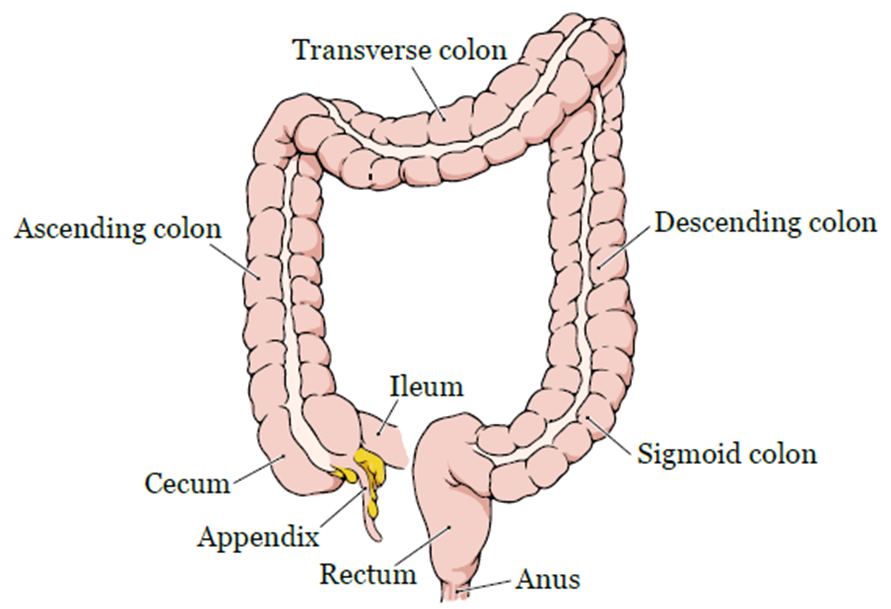A nurse is monitoring the urinary output of a client who had a colon resection. Which 24-hour output total indicates oliguria?
380 mL
550 mL
600 mL
720 mL
The Correct Answer is A
Choice A Reason:
A 24-hour urinary output of 380 mL indicates oliguria. Oliguria is defined as a urine output of less than 400-500 mL per day in adults. This condition can be caused by various factors, including dehydration, kidney dysfunction, or postoperative complications. Monitoring urine output is crucial for assessing kidney function and overall fluid balance, especially after major surgeries like a colon resection.

Choice B Reason:
A 24-hour urinary output of 550 mL is slightly above the threshold for oliguria. While it is still relatively low, it does not meet the strict criteria for oliguria, which is typically defined as less than 400-500 mL per day. This output suggests that the client is producing an adequate amount of urine, though it may still warrant close monitoring to ensure it does not decrease further.
Choice C Reason:
A 24-hour urinary output of 600 mL is within the normal range and does not indicate oliguria. Normal urine output for adults is generally considered to be around 800-2000 mL per day, depending on fluid intake and other factors. This output suggests that the client’s kidneys are functioning properly and that there is no immediate concern for oliguria.
Choice D Reason:
A 24-hour urinary output of 720 mL is also within the normal range and does not indicate oliguria. This output is closer to the lower end of the normal range but still suggests adequate kidney function. It is important to continue monitoring the client’s urine output to ensure it remains within a healthy range, especially after surgery.
Nursing Test Bank
Naxlex Comprehensive Predictor Exams
Related Questions
Correct Answer is B
Explanation
Choice A Reason:
Cardiac monitoring involves the continuous observation of the heart’s electrical activity, typically using an electrocardiogram (ECG). While cardiac monitoring is essential for detecting arrhythmias and other cardiac events, it does not directly measure fluid retention. Fluid retention in CHF patients can lead to symptoms such as edema and weight gain, which are not directly assessed through cardiac monitoring.
Choice B Reason:
Daily weight measurement is a reliable and practical method for assessing fluid retention in clients with congestive heart failure. Fluid retention leads to an increase in body weight, and monitoring daily weight changes can help detect fluid accumulation early. A sudden weight gain of more than 2-3 pounds in a day or 5 pounds in a week is a significant indicator of fluid retention and worsening heart failure. This method is non-invasive, easy to perform, and provides valuable information for managing CHF.

Choice C Reason:
Blood pressure monitoring is crucial for managing clients with CHF, as hypertension can exacerbate heart failure. However, blood pressure readings alone do not provide a direct measure of fluid retention. While fluid overload can affect blood pressure, it is not a specific or sensitive indicator of fluid status. Blood pressure monitoring should be used in conjunction with other assessment tools to manage CHF effectively.
Choice D Reason:
Urine output measurement is an important parameter for assessing kidney function and fluid balance. In clients with CHF, reduced urine output can indicate worsening heart failure and fluid retention. However, urine output alone may not provide a complete picture of fluid status, especially if the client is on diuretic therapy. Daily weight measurement remains a more direct and reliable method for assessing fluid retention in CHF patients.
Correct Answer is C
Explanation
Choice A Reason:
The client’s immediate family members may not always have the right to access the client’s protected health information (PHI) unless the client has given explicit consent. Confidentiality laws, such as the Health Insurance Portability and Accountability Act (HIPAA) in the United States, are designed to protect the privacy of patients’ health information. These laws generally require that PHI be shared only with individuals who are directly involved in the patient’s care or who have been authorized by the patient. Therefore, while family members may be involved in the patient’s care, they do not automatically have the right to access PHI without the patient’s consent.
Choice B Reason:
The facility’s administrators typically do not need access to a specific client’s PHI unless it is necessary for administrative purposes related to the patient’s care or for compliance with legal and regulatory requirements. Administrators are generally more involved in the overall management and operation of the healthcare facility rather than in the direct care of individual patients. Sharing PHI with administrators without a valid reason could violate confidentiality laws and the patient’s right to privacy.
Choice C Reason:
Health care team members caring for the client are directly involved in the patient’s care and, therefore, have a legitimate need to access the client’s PHI. This includes doctors, nurses, therapists, and other healthcare professionals who are providing treatment, coordinating care, or ensuring the patient’s well-being. Sharing PHI with these individuals is essential for delivering safe and effective care, and it is permitted under confidentiality laws such as HIPAA.
Choice D Reason:
Clergy affiliated with the facility may provide spiritual support to patients, but they do not typically have a legitimate need to access the client’s PHI unless the patient has given explicit consent. While spiritual care is an important aspect of holistic healthcare, it does not require access to detailed medical information. Therefore, sharing PHI with clergy without the patient’s consent would generally be considered a violation of confidentiality laws.
Whether you are a student looking to ace your exams or a practicing nurse seeking to enhance your expertise , our nursing education contents will empower you with the confidence and competence to make a difference in the lives of patients and become a respected leader in the healthcare field.
Visit Naxlex, invest in your future and unlock endless possibilities with our unparalleled nursing education contents today
Report Wrong Answer on the Current Question
Do you disagree with the answer? If yes, what is your expected answer? Explain.
Kindly be descriptive with the issue you are facing.
